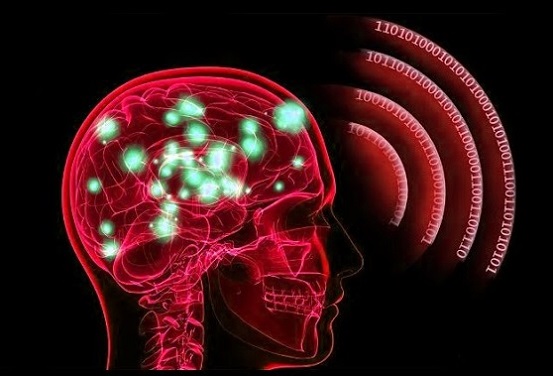BREAKING! Chinese Scientist Develop Wireless-Based Nanoparticles to Reverse Parkinson’s Disease Via Brain Stimulation
Nikhil Prasad Fact checked by:Thailand Medical News Team Jan 22, 2025 2 months, 3 weeks, 5 days, 12 hours, 51 minutes ago
Medical News: A revolutionary breakthrough from China has introduced a cutting-edge approach to combating Parkinson’s disease (PD). This debilitating neurodegenerative disorder, characterized by motor dysfunction, memory issues, and eventual loss of autonomy, has long posed challenges for both patients and the medical community. Traditional treatments like medication and deep brain stimulation (DBS) have provided some relief but are fraught with limitations, including invasive procedures and side effects.
 Chinese Scientist Develop Wireless-Based Nanoparticles to Reverse Parkinson’s Disease Via Brain Stimulation
Chinese Scientist Develop Wireless-Based Nanoparticles to Reverse Parkinson’s Disease Via Brain Stimulation
In a recent study published in Science Advances, a team led by Professor Chunying Chen from the National Center for Nanoscience and Technology (NCNST) of the Chinese Academy of Sciences developed a wireless, nanoparticle-based system aimed at reversing Parkinson’s disease by stimulating the brain in a non-invasive manner. This
Medical News report explores the intricacies of this groundbreaking innovation and its implications for the future of PD treatment.
Understanding Parkinson’s Disease
Parkinson’s disease is the second most prevalent neurodegenerative condition globally, affecting millions of individuals. The disease’s hallmark is the death of dopaminergic neurons in the substantia nigra, a brain region critical for motor control. This neuronal degeneration stems from the accumulation of misfolded α-synuclein proteins, which aggregate into toxic fibrils and Lewy bodies, disrupting normal brain function.
Current treatments focus primarily on symptom management. For instance, medications like L-dopa aim to replenish dopamine levels, while DBS involves implanting electrodes to stimulate specific brain regions. However, DBS’s invasive nature often results in complications, including cognitive decline, emotional disturbances, and surgical risks. Non-invasive methods such as transcranial magnetic stimulation (TMS) and transcranial direct current stimulation (tDCS) offer safer alternatives but lack sufficient penetration and spatial precision. These challenges underscore the urgent need for innovative solutions.
Wireless Photothermal DBS Nanosystem: A Paradigm Shift
The Chinese research team’s novel wireless photothermal DBS nanosystem introduces a transformative approach to treating PD. This advanced system, known as Au@TRPV1@-β-syn nanoparticles (ATB NPs), combines three pivotal components:
-Photothermal Conversion Module: Gold nanoshells (AuNSs) act as nanoantennas, converting near-infrared (NIR) light into localized heat.
-Targeting Module: Antibodies specific to the TRPV1 receptor, highly expressed in dopaminergic neurons, ensure precise targeting.
-Degradation Module: A β-synuclein peptide containing a NIR-responsive linker facilitates the bre
akdown of toxic α-synuclein aggregates.
This multifaceted system enables precise stimulation of degenerative neurons while simultaneously clearing harmful protein aggregates, thus addressing both the symptoms and underlying causes of PD.
Mechanism of Action
After a stereotactic injection into the substantia nigra of Parkinson’s disease models, ATB NPs target the affected dopaminergic neurons. Upon NIR laser irradiation at 808 nm, these nanoparticles:
-Convert light energy into heat, activating TRPV1 receptors to trigger calcium ion influx and neuronal action potentials.
-Release β-synuclein peptides, which bind to and degrade α-synuclein fibrils through chaperone-mediated autophagy.
This dual action restores the interactive network of dopaminergic neurons and enhances dopamine release, ultimately improving motor function in animal models. Remarkably, this system achieves these effects without the need for implanted electrodes or genetic modifications, making it a safer and more accessible option.
Key Advantages of the Wireless DBS Nanosystem
The ATB NP system boasts several groundbreaking advantages:
-Non-Invasive Modulation: By leveraging endogenous TRPV1 receptors, the technology avoids the risks associated with surgical implantation of neural electrodes.
-Precision and Efficiency: The integration of NIR laser technology enables targeted stimulation with high spatial and temporal resolution.
-Biosafety: Extensive testing has demonstrated the nanoparticles’ excellent biocompatibility, with no adverse effects observed in treated models.
Results from Preclinical Studies
In laboratory tests using a mouse model of Parkinson’s disease, the wireless DBS nanosystem yielded promising results:
-Motor Function Improvement: Treated mice displayed restored motor abilities, as evidenced by improved performance in rotarod and pole tests.
-Reduction of α-Synuclein Aggregates: The release of β-synuclein peptides facilitated the clearance of toxic protein fibrils.
-Neuronal Network Restoration: Damaged dopaminergic neurons regained their structural integrity and functionality.
These findings underscore the system’s potential to revolutionize PD therapy by addressing both symptoms and disease progression.
Broader Implications for Neurological Disorders
While the primary focus has been on Parkinson’s disease, this innovative approach holds promise for treating other neurodegenerative conditions characterized by protein aggregation, such as Alzheimer’s disease and Huntington’s disease. By adapting the nanoparticle design and targeting mechanisms, researchers could potentially expand this technology’s application to a wide range of brain disorders.
Conclusions
The development of the wireless photothermal DBS nanosystem marks a significant milestone in the quest to combat Parkinson’s disease. By combining precision nanotechnology, advanced neuroscience, and innovative engineering, this approach offers a non-invasive, effective, and safe alternative to traditional treatments. The ability to stimulate neurons and clear toxic protein aggregates simultaneously represents a paradigm shift in how we approach neurodegenerative diseases.
As promising as these findings are, further research is necessary to evaluate long-term safety, efficacy, and scalability. Clinical trials will be critical to translating this technology from the laboratory to the clinic, offering hope to millions of individuals affected by Parkinson’s and related disorders.
The study findings were published in the peer reviewed journal: Science Advances.
https://www.science.org/doi/10.1126/sciadv.ado4927
For the latest in Medical Innovations, keep on logging to Thailand
Medical News.
Read Also:
https://www.thailandmedical.news/news/cannabicyclol-cbl-a-phytochemical-found-in-cannabis-that-has-been-recently-found-to-target-serotonin-receptors
https://www.thailandmedical.news/news/french-scientists-find-that-sars-cov-2-can-replicate-and-persist-in-the-brainstem-for-lengthy-periods
https://www.thailandmedical.news/news/h5n1-bird-flu-adaptation-in-cats-in-south-dakota-as-a-lethal-neurotrophic-virus-raises-alarms
